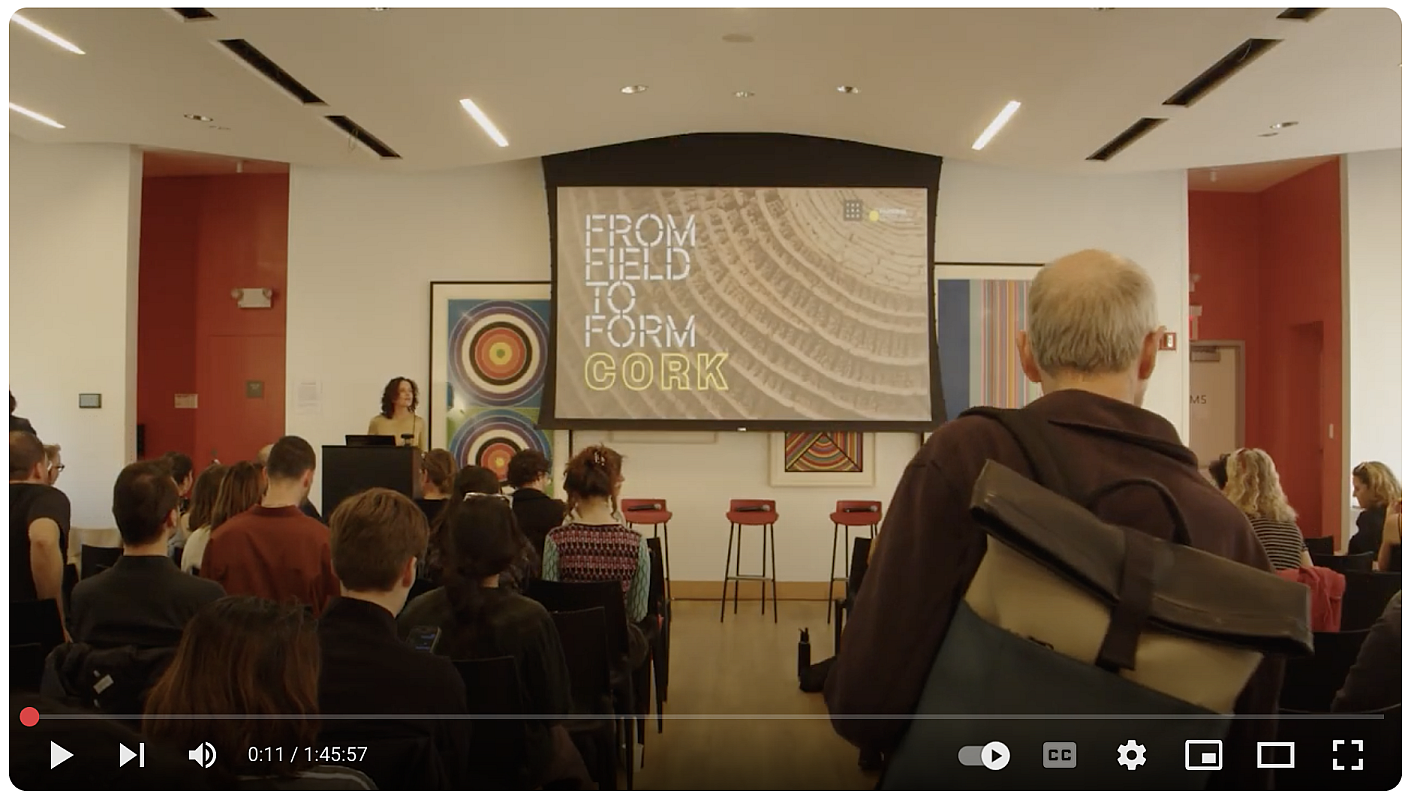Cork is more than a bottle stopper; it is a regenerative, carbon-sequestering, non-toxic material with extraordinary potential for design and construction. From Field to Form: Cork brings together international voices from forestry, design, and manufacturing to explore cork’s life cycle from acorn to architectural application. This dynamic event is part of a continuing series co-hosted by Healthy Materials Lab and The Architectural League that investigates the architectural possibilities of plant- and earth-based materials.
Watch the recording here:
Moderated by Jonsara Ruth (HML) and Paul Lewis (LTL Architects), the event convenes a panel of speakers representing every stage of the cork ecosystem, from Portugal’s cork forests to experimental studios and large-scale reuse initiatives.
Sandra Alcobia of Companhia das Lezírias offers a rare look into Portugal’s cork oak forests, centuries-old landscapes where “each tree can capture 1–5 tons of CO₂” and harvesting practices are deeply entwined with ecological stewardship. “It is a living ecosystem,” she says, “shaped by centuries of coexistence between people, trees, and wildlife.”
Designer and educator Daniel Michalik highlights cork’s unique regenerative properties and material intelligence: “We take the bark, and the bark grows back…Cork is a regenerative material with the ability to sequester carbon throughout its lifecycle.”
“Cork allows for the transfer of oxygen—which is why it makes for a great wine stopper—allowing wine to age appropriately over time.” -Daniel Michalik
Architect Oliver Wilton shares insights from Cork House, an award-winning experimental dwelling in the UK made almost entirely from solid load-bearing cork and how it was made, whereby “no added ingredients [were needed] to bind the cork when heat and pressure is applied.”
Daniel Marino of Rockwell Group introduces the Cork Collective, a U.S.-based initiative that collects and repurposes millions of wine corks for architectural reuse. “The material is already here,” he emphasized, “and there are 2.3 billion used wine corks in the U.S. annually. We just need to scale production to repurpose cork for further use.”
The evening also featured a Cork Material Exhibit, curated by Jessica Thies (HML), where attendees experienced cork firsthand - its texture, smell, and warmth. The exhibit showcased Thermacork insulation and panels from Amorim, Forbo’s Corkment and Bulletin Board, CorSkin and DIAM biobased binders, Sofalca’s Black Cork and GenCork, Michalik’s own cork furniture work, and innovative projects by Parsons School of Design students.
This event opens important questions about cork’s role in healthier, regenerative design and what it will take to scale its use across architecture and manufacturing. In the search for sustainable alternatives, cork stands out as a carbon-negative, renewable material whose cultivation and use contribute to ecological restoration.
